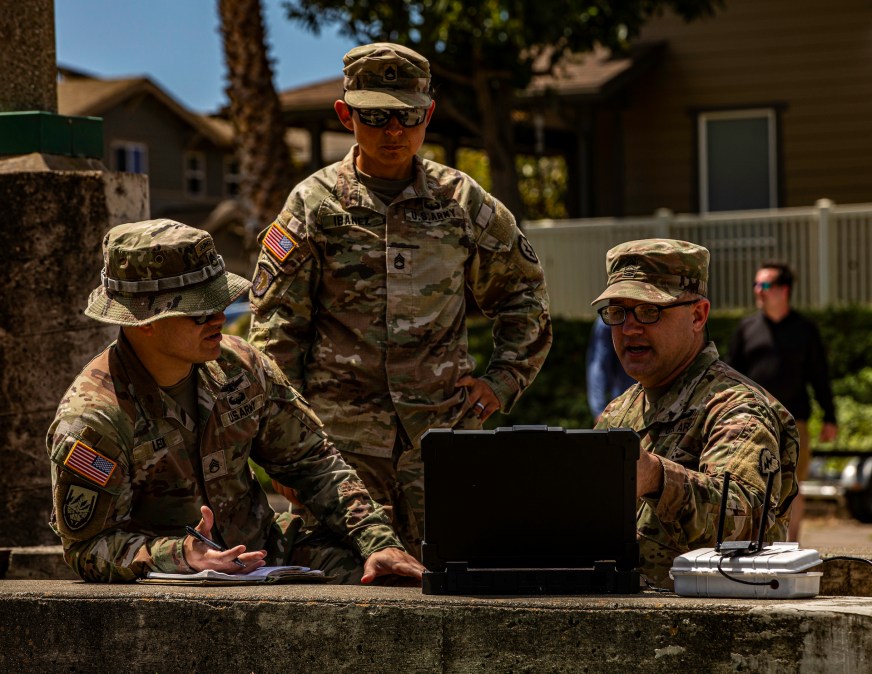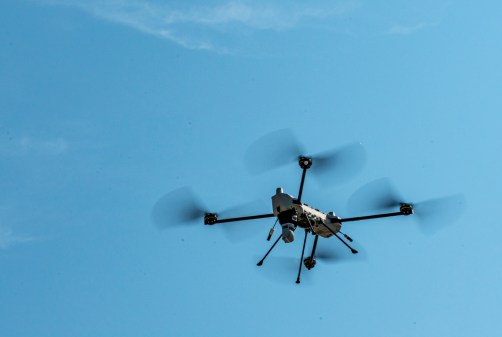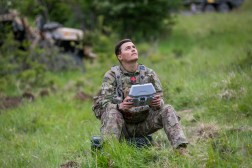Congress wants to see Army’s ‘homework’ on transformation initiative

Members of Congress are calling for more details about the Army’s new transformation initiative, noting at a hearing Wednesday that the service’s plan for the effort hasn’t been sent to Capitol Hill.
While largely expressing support for the initiative, lawmakers said they need more info.
“Unfortunately, we still have not received any real information on the Army’s budget request, nor have we received any detailed information on the Army’s Transformation Initiative, or ATI, the secretary and the chief announced over a month ago,” Rep. Mike Rogers, R-Ala., chairman of the House Armed Services Committee, said. “I believe I speak for most of the members of this committee when I say that we share the goal of developing a more modern, agile and well-equipped Army.”
At the end of April, the service announced what it dubbed Army Transformation Initiative, seeking to shrink its headquarters elements, become leaner, cut programs that aren’t efficient and change how it spends, following a directive from Secretary of Defense Pete Hegseth for sweeping changes to the service.
Rogers told Army Chief of Staff Gen. Randy George and Secretary of the Army Daniel Driscoll at Wednesday’s HASC hearing that the committee wants to see the service’s “homework” given the significance of what leaders are trying to do.
“We need to see your homework. An overhaul this significant should be based on a thorough assessment of requirements. And it should include a detailed blueprint of the specific changes being proposed and how the Army plans to implement them. We need to see those assessments and blueprints,” he said. “We also need you to provide us a timeline for implementing ATI. These details will help Congress understand, evaluate, and ultimately fund, your transformation efforts.”
That concern was shared by other top members of the committee as well.
“I want to applaud both of you publicly for diving into that very difficult subject. It needs to be done. Now, the chairman is right, the details need to be worked out, but there is no question that the nature of warfare is changing dramatically. How do we adjust our force to meet those challenges?” Rep. Adam Smith, D-Wash., the panel’s ranking member, said. “Your efforts in that are broadly supported by this committee. Devil’s in the details, but you’re headed in the right direction and we look forward to working with you to make some of those changes.”
Others expressed dismay regarding how the Army has presented the reform effort and requested more details from leadership.
“Like many of my colleagues, I am frustrated by how the Army has decided to roll out this Army Transformation Initiative. It doesn’t matter which side of the aisle that we’re on here, we all want to make sure that the Army is lethal, it is ready to meet the challenges of today and tomorrow,” Rep. Eric Sorensen, D-Ill., said. “However, you chose to give us a plan with few details, with no budgeting and a failure to answer a lot of our questions. Now we’re hearing about how this plan will be implemented from my own constituents, not from leadership. The Army and Congress have always had a better relationship than that.”
When service leaders announced their intentions for reforms, they stated that they were aimed at better posturing the service to deter China in the Pacific theater. But some on the Hill want them to be more forthcoming.
“The Army Transformation Initiative has generated more questions than answers in the department’s attempt to deliver critical warfighting capabilities, optimize our force structure and eliminate waste and obsolete programs,” Rep. Derek Tran, D-Calif., said. “In particular, I am concerned with how the ATI positions the Army to better counter a near-peer adversary like the People’s Republic of China. China’s ability to rapidly field new capabilities can be attributed to its centralized political and military decision-making, state-directed industrial base, incremental fielding of new systems and their blatant theft of foreign intellectual property, all with little to no public oversight.”
When asked for a timeline for details of what the service is proposing, Army Secretary Dan Driscoll told the committee that the transformation will be an iterative process and that there won’t be a single date for everything in the initial batch of transformation.
“We will be hopefully doing what the best companies in America do and learning as we go,” Driscoll said, noting some efforts are in progress. He promised to share details as soon as “reasonable drafts” are in place.
He said many of the cuts to obsolete programs will be reflected in the forthcoming fiscal 2026 budget.
“We’re obviously continuing with FY25 [spending] because that’s what we were directed to do with our budget,” George said, adding that they’re canceling Humvees and haven’t asked to purchase new ones.
HASC members said they wanted to ensure that the Army was making transformation choices based on real policy decisions that will help the service counter battlefield threats more effectively rather than being purely rooted in budgetary constraints.
“If budget is driving policy, you’re going to have a problem by this committee. If policy is being driven first and budget is a consequence, then we’re going to be open ears,” Rogers said. “But you can’t just try to make your policy or your construct fit a number that’s arbitrary. We need you to let us know what you need and then let us worry about funding it, because that’s what we’re here for. Just know that there’s other people that see this same way you do, which is why we need a budget so we can talk about these things. But I can’t overstate, we are not going to be hostile to dramatic changes if it’s being driven by the need for change and not just to meet some budget number that somebody’s handed to you.”






